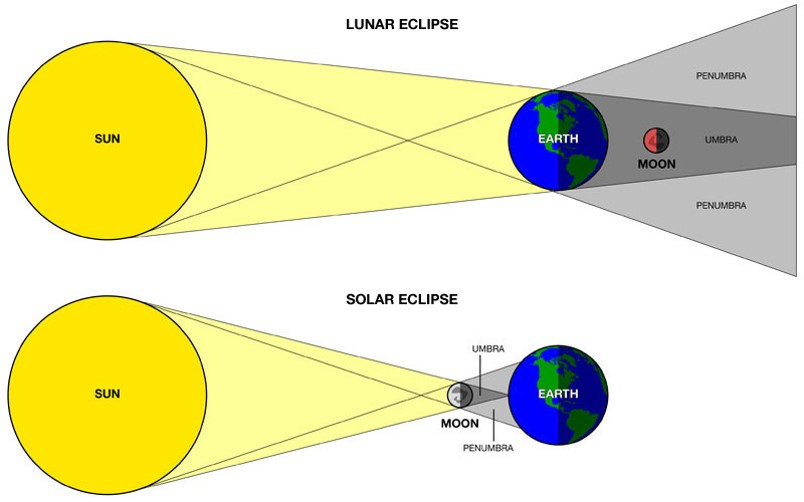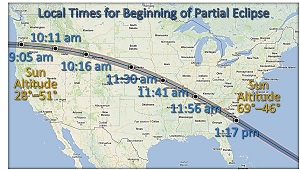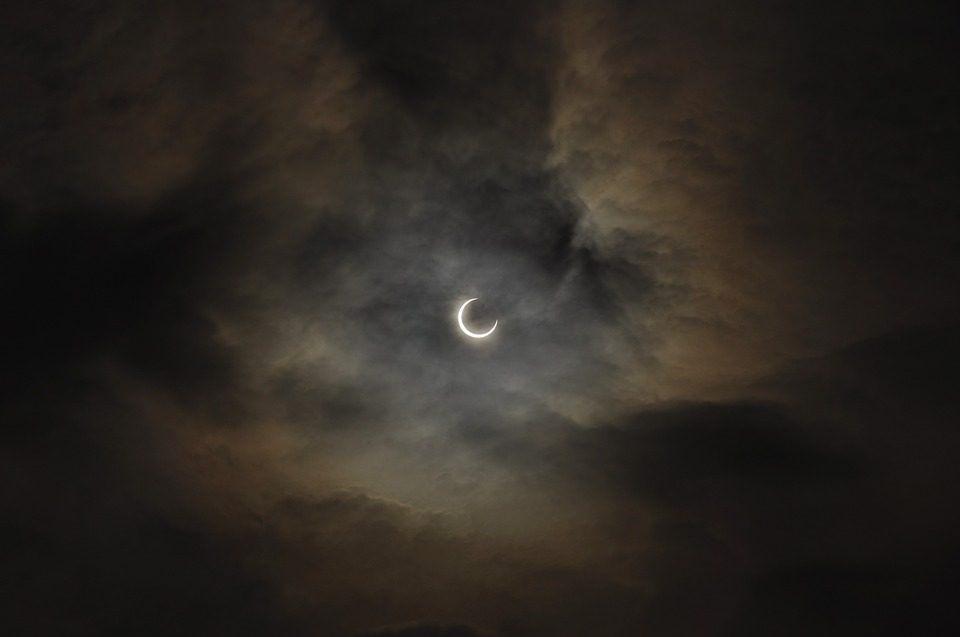
Editor’s Note: On August 21st, 2017, the United States will experience its first total solar eclipse in 38 years. Jackson, WY happens to be in an ideal location to view the eclipse, and we’re already counting down the days. Field Education will be welcoming adult and family participants with our partner TravelQuest for a week of exploration in Grand Teton and Yellowstone National Parks surrounding the eclipse. Figuring out the science behind total solar eclipses has been an education for all of us, so we’re excited to bring you an expert on the topic. Thanks to Dr. Samuel Singer, of Wyoming Stargazing, a good friend of TSS, for his eclipse support, staff training, and blog! Check out more of his eclipse blog here.
What is a solar eclipse?
Eclipse means “to obscure light.” A solar eclipse is the straight-line alignment of the Sun, Moon, and the Earth, also known as syzygy. The Moon, directly between the Sun and the Earth, casts a shadow on our planet by obscuring the light from the Sun. If you’re in the dark part of that shadow, also known as the umbra, you’ll see a total solar eclipse. If you are in the light part, the penumbra, you’ll see a partial solar eclipse.
 How is a solar eclipse different than a lunar eclipse?
How is a solar eclipse different than a lunar eclipse?
A lunar eclipse is when the Earth is between the Sun and the Moon, and all three are in a syzygy alignment. The Earth obscures the light from the Sun, and casts a shadow on our Moon. Because the Earth is a lot larger than the Moon, the shadow is massive, and lunar eclipses can last for hours. The totality of a solar eclipse only lasts for a few minutes.
When do solar eclipses happen?
A solar eclipse happens at New Moon. New Moon refers to the point in the Moon’s orbital cycle when the Moon is between the Sun and the Earth. During the New Moon we can’t actually see the Moon because the side that is facing away from us is the side that is lit up by the Sun.
 But there is a New Moon every month. Why don’t we have solar eclipses all the time?
But there is a New Moon every month. Why don’t we have solar eclipses all the time?
The Moon’s orbit is tilted 5° relative to the Earth’s orbit around the Sun. The point that the Moon’s orbital path intersects the Earth’s orbit around the Sun, is called a node. Eclipses only occur when all three bodies are in syzygy, with the Moon between the Sun and the Earth, and when the New Moon happens at a node.
I thought the Sun was a star. How can our tiny Moon block out all the light from the Sun?
The disc of the Sun is 400 times larger than the Moon. The Sun is also over 400 times further away from the Earth as the Moon. The Sun and the Moon appear to be the same size in the sky, allowing solar eclipses to occur – but not always, because the distances between the Moon and Earth and the distances between the Earth and the Sun are always changing due do the elliptical orbits of the Earth and the Moon.
 So this total solar eclipse in August… why is it such a big deal?
So this total solar eclipse in August… why is it such a big deal?
This eclipse is the first total solar eclipse in the continental U.S. in 38 years. The last one occurred on February 26, 1979. It only clipped five states in the Northwest, and the weather was mostly cloudy. This year, everyone in the continental U.S. will see a partial eclipse. The path of totality passes through 12 states: Oregon, Idaho, Wyoming, Nebraska, Kansas, Missouri, Illinois, Kentucky, Tennessee, Georgia, North Carolina, South Carolina.
Partial and totality… what’s the difference?
A partial eclipse is when the Moon blocks out less than 100% of the disc of the Sun. It is not safe to look directly at the event during a partial eclipse. Totality is the (short) time that the Moon is exactly aligned with the Sun, during which the Moon blocks out 100% of the disc of the Sun.
 How long does totality last?
How long does totality last?
The longest totality for this eclipse is 2 minutes and 20.2 seconds, visible from Giant City State Park, Illinois. The longest possible totality calculated is 7 minutes and 32 seconds. The longest totality recorded occurred on June 30th, 1973, lasting 7 minutes and 4 seconds. The Earth won’t see a totality that comes close to being that long until June 13th, 2132, at 6 minutes and 55 seconds.
Although total solar eclipses occur (on average) every 18 months all over the Earth, they are very rare in any specific location. On average, a total solar eclipse happens in the same place every 360 years. The next total solar eclipse in Jackson is not in December of 2252. Seeing the eclipse in Jackson this year is not just a once in a lifetime event – it is a once in every ten generations event.


